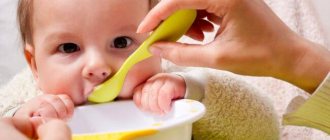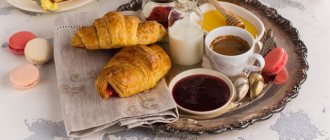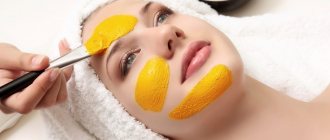January 27, 2021
Acne is an inflammatory disease of the skin, which is caused by changes in the sebaceous glands, as well as their excretory ducts and hair follicles. The causes of acne include heredity, hormonal imbalances, stress, gynecological diseases, taking certain medications, poor environment and unbalanced diet. To normalize sebum production, a diet is prescribed as a comprehensive component of treatment.
What foods should you not eat if you have acne?
Not only smoking and alcohol, but also some everyday foods can cause intoxication of the body and deterioration of the skin. They affect the level of glucose and cholesterol in the blood, thereby enhancing the functioning of the sebaceous glands. The body strives to remove the resulting toxins out, which leads to the appearance of acne.
According to the results of a number of studies, in regions where the population consumes a minimum amount of animal fats, the incidence of acne is below the world average. This proves the effectiveness of prescribing a diet for illness.
What foods to avoid for acne? When treating acne, you should avoid the following products:
- Sweets. Sugar and refined foods (for example, refined flour) provoke the accumulation of insulin, which leads to the production of male hormones - androgens. All this provokes increased production of sebum, which clogs the pores. When bacteria attach, acne appears.
- Dairy products. Traditionally, milk is considered a healthy product, but it is really only necessary for children. Adults lose the ability to digest cow protein, which causes an increase in insulin in the blood. Betacullin contained in milk causes the growth of new cells and slows down the death of old ones, which is not normal. The worst dairy products that cause acne are full-fat cheese and whey-based milkshakes, which act like concentrated milk.
- Flour products, porridges (cereals, boiled porridges), pasta, starchy foods. Cereals (wheat, rye, barley) and products based on them contain gluten in large quantities. This substance forms gluten, which interferes with normal intestinal function. Products based on wheat flour and starch cause the release of insulin, which provokes the appearance of acne.
- Coffee. This drink stimulates the production of cortisol, the stress hormone. It has a destructive effect on the liver and causes an increase in blood sugar.
- Fast food, semi-finished products and sauces. Foods that should not be eaten if you have acne include those that contain flavor enhancers and trans fats (snacks, hamburgers, chips, onion rings). They cause not only addiction and the growth of adipose tissue, but also the formation of acne on the skin.
- Alcohol. Alcohol-containing drinks dilate blood vessels, causing redness of the skin and dehydration.
- Fat meat. Dishes made from foods containing animal fats enhance the work of the sebaceous glands, which subsequently provokes the appearance of acne.
Some products, deservedly classified as healthy and dietary, can provoke acne:
- Spinach. The vegetable is an excellent source of iron. At the same time, spinach contains iodine, which, when accumulated in the body in large quantities, can provoke the appearance of imperfections on the skin.
- Peanut. This is a healthy product, but not for those suffering from acne, since these nuts contain a substance that enhances the production of sebum.
What food will help fight acne?
Pay attention to elements in the products such as phosphorus, potassium, calcium, zinc, vitamins A, C, D, E and B - they resist oxidative stress, break down elastin, produce collagen, and with sufficient consumption, the skin will retain its beauty and natural appearance for a long time. radiance and health.
Also enrich your diet with antioxidant products, which will help cells from the inside fight the destructive effects of free radicals, prevent premature aging and improve the condition of problem skin.
The necessary components are contained in sufficient quantities in the following products:
- mushrooms;
- spices (ginger, turmeric, cinnamon);
- whole grain cereals, bran;
- nuts (walnuts, almonds, Brazil nuts), legumes and seeds;
- fresh fruits, vegetables, herbs, forest and garden berries;
- soybeans and soy products;
- seafood and seaweed.
This article is informational material. The content of this article does not constitute medical advice and cannot replace it. The use of information from the article, as well as any recommendations or advice, remains at your discretion. The site owner is not responsible for any harm resulting from the use of information from this article, including tips and recommendations. If you have any questions related to skin health, consult your doctor. La Roche-Posay products are cosmetics.
How much can you drink?
A Norwegian population-based study found that consumption of more than two glasses of milk per day and full-fat dairy products was associated with moderate to severe disease.
No significant associations were found between reductions in inflammatory elements and consumption of low-fat or nonfat dairy products19.
A 2022 study by Turkish dermatologists found that cheese consumption was higher in acne patients compared to controls20.
Is skim milk safe?
Many studies have shown that skim milk is more comedogenic than whole milk. It is believed that during the production of skim milk, changes in glucocorticoid and TGF-β activity occur, which disrupt the hormonal balance of the milk. Moreover, to maintain proper consistency, skim milk producers add whey proteins, such as α-lactoalbumin, which also play a significant role in comedogenesis21.
In 2005, Adebamowo et al. showed that skim milk contains less estrogen, a hormone that may curb acneogenesis. He also showed that cottage cheese22 as a fermented milk product, as well as ice cream23 based on cow's milk, can provoke inflammation.
How evidence-based is the research?
Several observational studies of milk consumption, dairy products and acne have been published in various countries. Age groups – children, adolescents and young adults (7–30 years old)11.
They found that all dairy products, as well as whole milk, skim milk and yogurt, regardless of the amount or frequency consumed, increased the likelihood of acne.
Descriptive and systematic reviews12 and meta-analyses13 have also been published.
However, a number of scientists expressed ambiguity regarding the evidentiary value of research and noted limitations14:
- Subjective questionnaires were focused on the assessment of the patients themselves; a diagnosis confirmed by a doctor might not be available15.
- The inclusion of other dermatological patients as controls 16 weakened the associations, since seborrhea can also occur with concomitant diseases.
- Data Bias Participants may have deliberately overestimated or underestimated their condition when completing questionnaires. In addition, in the meta-analyses, it was not possible to clearly distinguish between the moment of onset of inflammatory elements and the severity of the condition. Other dietary factors (eg glycemic index, caloric intake) or lifestyle factors were not always taken into account17.
Although research has demonstrated a positive association between milk consumption and acne, the American Academy of Dermatology has been reluctant to implement recommendations to limit dairy consumption because it did not consider the evidence to be strong enough18.
Should you give up dairy if you have acne?
Casein and whey are often added to skim milk to enhance the flavor. If you cannot completely give up this product, then give preference to whole milk.
It doesn't make sense to give up all dairy products. Milk and Ice Cream and Acne aggravate inflammation, while natural yogurt or cheese may have no effect on the skin.
Due to fermentation, yogurt contains less insulin-like growth factor-1 than milk. Therefore, it does not have such a strong effect on the skin. And yogurt with probiotics may even reduce inflammation. Could probiotics be the next big thing in acne and rosacea treatments.
How cheese affects the skin condition remains unclear.
What to eat to speed up the process of getting rid of acne
The acne diet focuses more on reducing your intake of carbohydrates and saturated fats and increasing your intake of nutrients, antioxidants and fiber - this diet improves the immune and digestive systems, and the skin becomes noticeably clearer and looks healthier. To help your body fight breakouts, it is recommended to include the following categories of foods in your diet:
Probiotics
In some cases, the occurrence of rashes may be associated with the state of the intestinal microflora. An imbalance of microflora contributes to the appearance of inflammatory processes in the body and, as a result, acne on the face, chest and back. Probiotics reduce the intensity of oxidative processes and resist inflammation. To maintain a normal digestive process, it is important that your diet includes foods such as pickled vegetables and dark chocolate.
Zinc-rich foods
Zinc reduces the appearance of acne and helps get rid of rashes faster, so it should be in your daily diet. Include chicken and beef liver, chicken hearts, boiled beef tongue, roast beef, pumpkin and watermelon seeds, pine nuts and pecans in your diet. The champion in the amount of zinc is oysters (however, remember that oysters are a strong allergen).
Fish and Omega-3
Most people have excess amounts of Omega-6 fatty acids in their daily diet. For all its benefits, Omega-6 promotes inflammatory processes in internal organs and tissues, therefore they are not recommended in large quantities against the background of acne. To reduce the severity of breakouts, balance your diet with Omega-3 fatty acids, which have an anti-inflammatory effect and prevent clogged pores. Omega-3 is found most in fatty sea fish, such as mackerel, as well as tuna, sardines, salmon and cod liver. From plant products - in flax seeds, broccoli and Brussels sprouts.
Vegetables, herbs and freshly squeezed juices
A vegetable diet cleanses the body of toxins and keeps the skin toned. People suffering from acne are advised to include more vegetables and herbs in their diet, which contain beta-carotene, a provitamin that promotes the natural regulation of skin oiliness and has an anti-inflammatory effect. A lot of beta-carotene is found in carrots, sea buckthorn, parsley and celery. For acne, it is also recommended to eat more dark-colored berries (raspberries, blueberries, black currants) - they contain many antioxidants that improve skin condition.
Green tea
This drink is a powerful antioxidant and effectively protects the body from the adverse effects of the external environment. Green tea can be drunk throughout the day - both hot and cold. It is especially useful to brew green tea varieties in a teapot - tea pre-packaged in bags loses most of its beneficial properties.
Meat products
I will immediately outline one fundamental point regarding meat: it is very important what exactly we use it with. Fatty meat eaten separately from carbohydrates will not cause much harm to our skin. But if we add potatoes or pasta to it, this can affect the composition of sebum and provoke inflammatory elements.
It is better to combine meat with fresh, stewed, boiled or steamed vegetables.
Also try not to overuse red meat: it is dangerous for diseases of the gastrointestinal tract and especially the intestines. Therefore, people who have relatives with bowel cancer should completely exclude this product from their diet. And vice versa, enrich your diet with chicken and fish.
Crunch on an apple, not chips. Putting together a balanced diet remotely Read more









